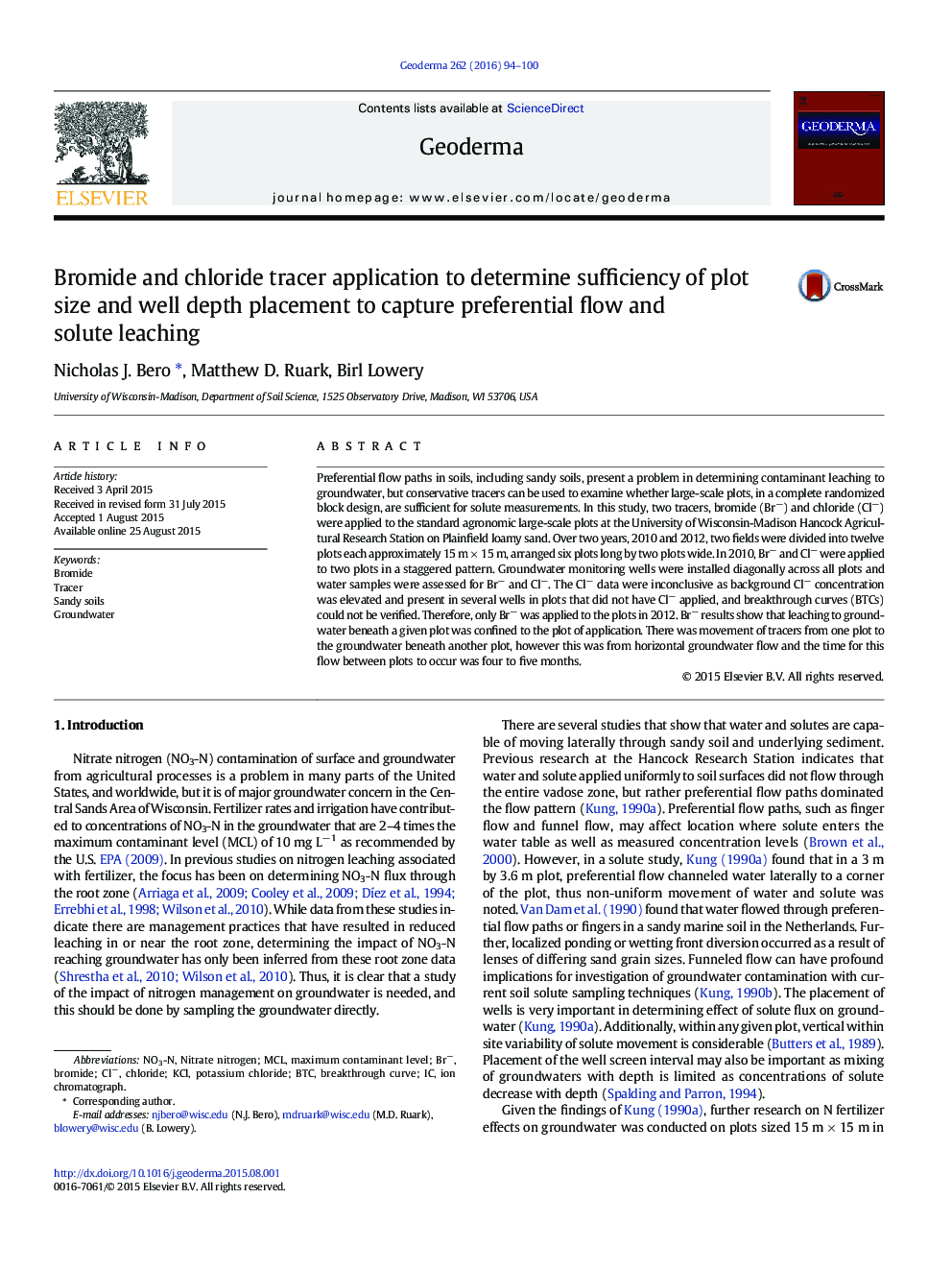| کد مقاله | کد نشریه | سال انتشار | مقاله انگلیسی | نسخه تمام متن |
|---|---|---|---|---|
| 4573052 | 1629454 | 2016 | 7 صفحه PDF | دانلود رایگان |
• 15 m × 15 m plot size sufficient to capture preferential flow.
• Bromide breakthrough occurred directly below plots to which bromide was applied.
• Well screens must intersect water table to capture agricultural chemicals.
• Chloride was a poor tracer in this area due to high background concentrations.
• Sampling should be done all year to account for the time to reach the water table.
Preferential flow paths in soils, including sandy soils, present a problem in determining contaminant leaching to groundwater, but conservative tracers can be used to examine whether large-scale plots, in a complete randomized block design, are sufficient for solute measurements. In this study, two tracers, bromide (Br−) and chloride (Cl−) were applied to the standard agronomic large-scale plots at the University of Wisconsin-Madison Hancock Agricultural Research Station on Plainfield loamy sand. Over two years, 2010 and 2012, two fields were divided into twelve plots each approximately 15 m × 15 m, arranged six plots long by two plots wide. In 2010, Br− and Cl− were applied to two plots in a staggered pattern. Groundwater monitoring wells were installed diagonally across all plots and water samples were assessed for Br− and Cl−. The Cl− data were inconclusive as background Cl− concentration was elevated and present in several wells in plots that did not have Cl− applied, and breakthrough curves (BTCs) could not be verified. Therefore, only Br− was applied to the plots in 2012. Br− results show that leaching to groundwater beneath a given plot was confined to the plot of application. There was movement of tracers from one plot to the groundwater beneath another plot, however this was from horizontal groundwater flow and the time for this flow between plots to occur was four to five months.
Journal: Geoderma - Volume 262, 15 January 2016, Pages 94–100
